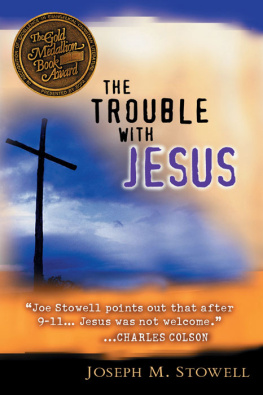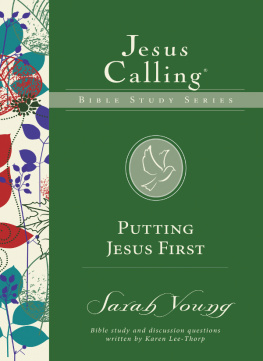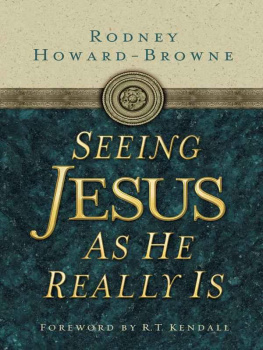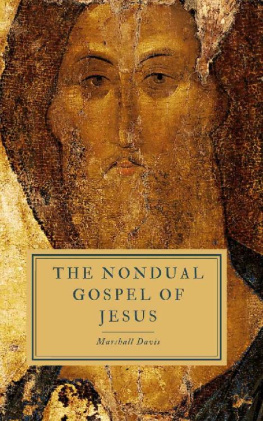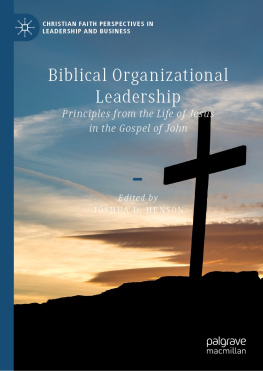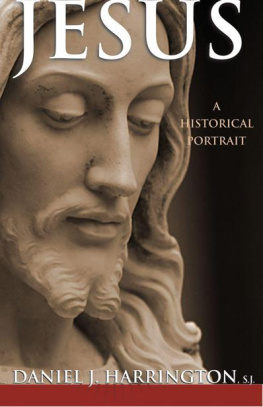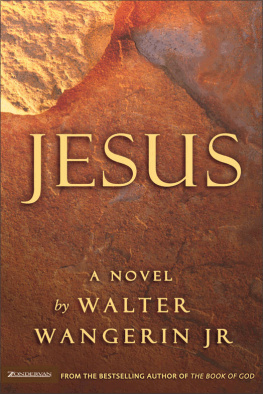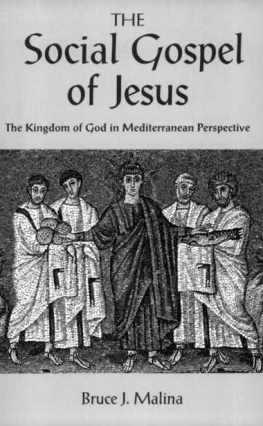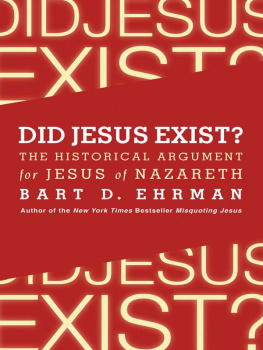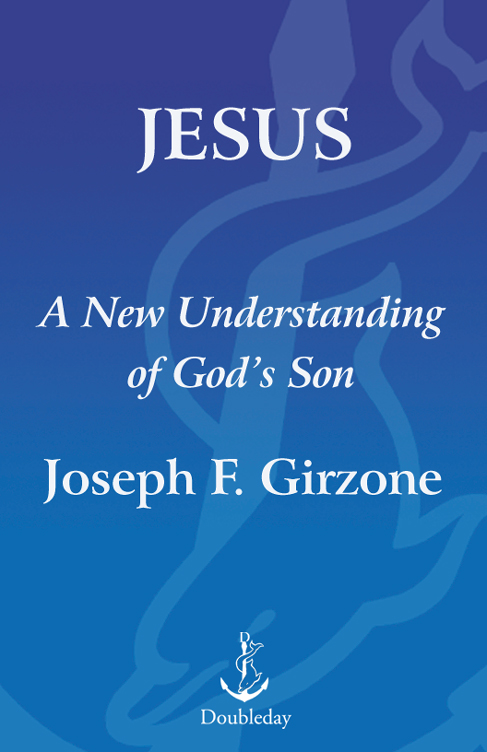PREFACE
When I first began to write and give talks about Jesus, a very pious priest shocked me one day by asking me the question, How can you possibly talk about Jesus for an hour and a half? This was the average length of my talks as I traveled from country to country trying in my own simple way to evangelize. I always thought that evangelizing meant talking about Jesus so people could know him and fall in love with him. As I had admired this priest since my childhood, I was taken aback by his remark.
When I asked him why he should be so surprised, he said, We were not taught about Jesus in the seminary. We had good Scripture courses and theology courses, and courses in canon law and liturgy and so many other subjects, but other than the course on Christology, which merely studied the history of the development of the earliest Christians understanding about Jesus, we really never learned anything in depth about Jesus, about how he thinks and how he feels and what his values are concerning so many issues in life. So, I dont think I could talk about him in any depth for more than five minutes.
I never forgot that, and from then on I kept looking every place I went and in every denomination, and it was the same. Protestants were enamored with the Scriptures, especially the letters of Saint Paul, and with Old Testament morality, while Catholics were enamored with the Church as the only teaching authority established by Jesus. One old German lady sized up the situation precisely during a talk one night when she said, The way I size up Christianity is like this: The Catholics worship the Church, the Protestants worship the Bible, and there are darn few who ever get to know Jesus Christ. And that is what has happened to Christianity. The Church and the Bible have become the message. And that is not the way it should be. Jesus is the message. The Church and the Bible are the medium of the message. The New Testament has value because it was authorized by those given authority by Jesus himself to teach. When we evangelize, we are supposed to preach Jesus as the message. But instead we preach the medium and have made the medium the message. The most graphic example of how true this is happened when I gave a two-hour talk on Jesus one day at a Southern Baptist university in Alabama. When I finished the talk, a number of professors approached me and said, You will never know what you did by coming here.
What did I do? I asked them.
You gave us Jesus.
What do you mean, I gave you Jesus? You people are experts in the Scriptures.
We may have studied Scripture all our lives, and may be considered experts, but you made us realize we never got to know Jesus. You gave us a flesh-and-blood Jesus who has lifted burdens from our hearts and healed wounds we have carried all our lives. And we want to thank you.
I was deeply touched by the humility of these scholarly people who could say to a Roman Catholic priest that hed introduced them to the real Jesus for the first time after they had studied Scripture all their lives. Unfortunately, the theologian who invited me was asked to leave a short time later for having invited me. It is because of this experience and others like it that I have spent whatever has been left of my life and energy trying to learn even more about Jesus so I could gather all these insights together and put them into writing, so others might have the benefit of whatever I may have learned over these final years of thoughtful and prayerful reflection.
Each of the gospel writers, Matthew, Mark, Luke, and John, relayed his account of Jesus life for different audiences and different cultures. As a result, they emphasized different aspects of Jesus life and teachings. Trying to understand the various messages and reconcile their various approaches has given rise to lively discussions among Scripture scholars. What I have done for almost fifty years is read constantly the differing interpretationsand meditate prayerfullythe gospels scenes in an attempt to enter into Jesus mind and heart as he lived those scenes.
While these reflections are formatted into chapters, they were originally delivered as a series of talks on Jesus life over a period of three and a half years. As I set these talks to manuscript, I tried to make my thoughts flow more smoothly so the readers could more easily meditate on each new insight as it presents itself. I hope and pray these reflections will accomplish what was intended: to draw us all into a deeper understanding of the God-Man who came among us to become one of us and offer his life for us as our Savior.
Joseph F. Girzone
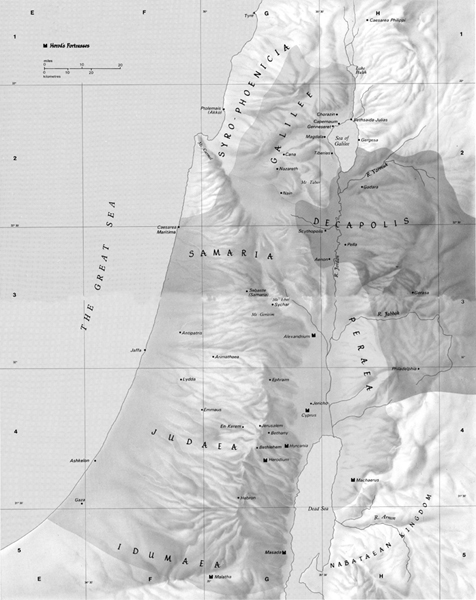
1

H EROD, THE M AD K ING
I t is necessary to understand the type of life people lived in Jesus day before we even begin to study Jesus life and the situations and conditions that affected his outlook and reactions to various peoples he would encounter. The territories of Galilee, Samaria, Judea, and Idumea made up the land of the Israelites. In the time of David the land extended as far as Damascus, and into other lands across the Jordan River. Under Davids reign there was only one kingdom. Shortly after his death, the kingdom was divided into the kingdom of Israel, which included Galilee and Samaria, and the kingdom of Judea. In the time just before the birth of Jesus, however, the situation was further confused by being broken up into various jurisdictions. A very wealthy and powerfully connected Idumean, who contributed supplies and money to the Roman generals needing local support, managed to convince the Roman emperor to install one of his sons as governor of Galilee. The son was Herod, one of the most brilliant, but also one of the most ruthless, rulers of his time.
After losing his governorship because of his cruelty, Herod schemed to get back into the good graces of Rome. Eventually, he won the support of the Roman general Mark Antony, who convinced the emperor Octavian to persuade the Roman senate to confirm Herod as king of Judea.
After the decree was issued making Herod king of Judea, he went to Judea to take over his kingdom. Judea was a thin strip of land that extended from Jericho and the Dead Sea, north to Mount Hermon, which is in present-day Lebanon. It also included Lake Huleh, the cold-water lake that fed the Jordan River, which extends all the way south to the Dead Sea.
The northern part of the kingdom called Galilee was rich in farmland and fruit and olive orchards, and produced wheat and barley and other grains. There were also extensive forests that provided lumber for construction. Herod took personal possession of all this land and its resources and rented it out to the inhabitants, from whom he collected high rents. It did not take long before Herod became a very wealthy king. He also benefited from the mines, principally the copper mines, in southern Judea. Shortly after becoming king, he undertook the construction of a vast network of buildings: palaces, fortifications, public baths after the style in Rome, and monuments to the Roman emperors, including vast amphitheaters for plays and other dramatic shows that rivaled in grandeur and splendor the impressive buildings in Rome itself.



